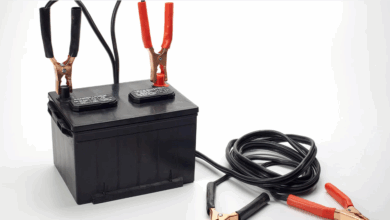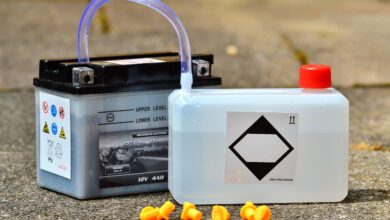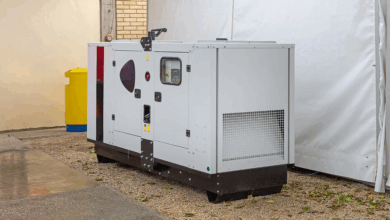Powering Your Life: The Capability of 5000 Watts

Powering Your Life: The Capability of 5000 Watts
In our increasingly electrified world, understanding power – specifically, how much of it you need and what it can do – is crucial, whether you’re planning for emergencies, exploring off-grid living, setting up a workshop, or hitting the road in an RV. While single-device power needs are often straightforward (a laptop needs maybe 50 watts, a microwave 1000-1500 watts), knowing what a larger block of power, like 5000 watts, is capable of can unlock significant potential and peace of mind.
But what exactly does "5000 watts" mean in practical terms, and how can this level of power truly "power your life"?
Understanding Watts: The Engine of Electricity
Before diving into the specifics of 5000 watts, let’s briefly revisit what a watt represents. In simple terms, a watt (W) is a unit of power, measuring the rate at which electrical energy flows or is used. Think of it like horsepower for an engine – it indicates how much "work" electricity can do per unit of time. Higher wattage means more power capacity, allowing devices that require more energy to operate or enabling you to run multiple devices simultaneously.
When we talk about 5000 watts, we’re referring to a substantial amount of electrical power capacity. It’s far more than a single typical wall outlet can safely provide (which is usually limited to 15A or 20A at 120V, equating to 1800W or 2400W). Reaching 5000 watts often involves accessing a larger, dedicated circuit, utilizing a robust power source like a generator or inverter, or managing the combined load of many devices.
The Practical Punch: What 5000 Watts Can Power
This is where the "capability" truly shines. 5000 watts (often listed as continuous or running watts, with a higher surge wattage capacity for starting motors) opens the door to powering a significant array of devices, often simultaneously.
Let’s look at some common scenarios and the appliances you could comfortably run:
-
Essential Household Backup: During a power outage, 5000 watts can be a lifesaver. It’s typically enough to power critical items like:
- Refrigerator or Freezer (approx. 100-200W running, higher starting surge)
- Sump Pump (approx. 800-1500W running, much higher surge)
- Well Pump (if applicable, power needs vary widely, but 5000W can handle many)
- Lights (LEDs are very low wattage, incandescent higher)
- Television and Internet Router
- Phone and Device Chargers
- A few fans or a window air conditioner (approx. 500-1500W depending on size)
- A microwave oven (approx. 1000-1500W)
- A coffee maker (approx. 800-1000W)
You likely couldn’t run all of these at the exact same moment, especially if multiple motors kick on simultaneously (like the fridge and sump pump). However, you can manage several key circuits or devices to keep essentials running smoothly.
-
Workshop or Garage Power: For hobbyists and professionals, 5000 watts provides ample power for most common tools:
- Table Saw (approx. 1500-2000W running, significant surge)
- Miter Saw (approx. 1000-1800W running, significant surge)
- Air Compressor (power varies greatly, many smaller/medium ones are within 5000W capacity including surge)
- Bench Grinder, Drill Press
- Vacuum Cleaner (Shop Vac)
- Battery Chargers for cordless tools
- Welders (some smaller stick or MIG welders may fit within this capacity, check specific model requirements)
Again, you’d need to be mindful of starting multiple large motor-driven tools simultaneously, but you can comfortably operate one or two major tools alongside lights and other smaller devices.
-
RV and Camping Comfort: Bringing the conveniences of home to the great outdoors is a primary use case for 5000W portable power. This level can handle:
- RV Air Conditioner (one large or two smaller units, power varies widely)
- Microwave and Coffee Maker
- Lights and Entertainment Systems
- Refrigerator (if electric)
- Water Pump
- Device Charging
A 5000W generator or inverter allows for a very comfortable camping experience, running significant appliances without being limited to basic necessities.
- Small Off-Grid Systems: While a whole-home off-grid system typically requires more, 5000 watts is a solid foundation for a small cabin, shed, or minimalist setup powered by solar panels and batteries. This capacity supports essential living functions as listed in the backup scenario, plus perhaps a small water heater or space heater if managed carefully and the energy storage (battery bank) is sufficient.
Where Does 5000 Watts Come From?
Accessing 5000 watts of power typically involves one of the following sources:
- Portable Generators: The most common way to get 5000W for backup or portable use. These are powered by gasoline, propane, or diesel. They are powerful and mobile but can be noisy and require fuel. Look for generators rated around 5000 "running" watts.
- Power Inverters: These devices convert DC power (from batteries, like in an RV or car) into AC power (what your home appliances use). A 5000W inverter requires a substantial battery bank to supply that power for any significant duration. They are quiet and emission-free but limited by battery capacity.
- Solar Power Systems: A solar setup capable of outputting 5000W continuously or via an inverter drawing from batteries represents a significant system. This involves many solar panels, a charge controller, a large battery bank, and a 5000W (or larger) inverter. This is a sustainable but often costly and complex solution.
- Utility Power / Dedicated Circuits: In a standard home electrical system, a 5000W load is too large for a single 120V outlet. It would typically require a dedicated 240V circuit (like for a large appliance) or careful load balancing across multiple circuits. For integrating a 5000W backup source into your home panel, a transfer switch and professional installation are necessary.
Important Considerations
While 5000 watts offers impressive capability, using it effectively and safely requires understanding a few key points:
- Starting vs. Running Watts: Motorized appliances (refrigerators, pumps, power tools) briefly draw a much higher wattage (surge watts) when starting than they do while running. Your power source needs to have a surge capacity high enough to handle the largest surge load you anticipate. A 5000 "running" watt generator often has a 6000-6500+ watt surge capacity.
- Pure Sine Wave vs. Modified Sine Wave: Sensitive electronics (laptops, smart TVs, medical equipment) prefer "pure sine wave" power, which is cleaner and more stable, mimicking utility power. Standard generators or older/cheaper inverters might produce "modified sine wave" power, which can potentially harm delicate devices.
- Safety First: Always operate power sources (especially generators) in well-ventilated areas to prevent carbon monoxide poisoning. Ensure proper grounding. Use appropriate extension cords rated for the load. Don’t overload your source.
- Fuel/Battery Life: A 5000W generator running at or near capacity will consume fuel rapidly. Similarly, drawing 5000W from batteries will deplete them very quickly. Plan your power usage and fuel/charging needs accordingly.
Is 5000W Enough for a Whole House?
This is a common question. For running every appliance in a typical modern home simultaneously (central air conditioning, electric stove/oven, electric dryer, etc.), 5000 watts is generally not enough. These major appliances alone can easily exceed that wattage.
However, for running the essential circuits during a power outage (as listed in the backup scenario), 5000 watts is often perfectly adequate and provides a significant level of comfort and functionality. If you plan to use it for whole-home backup, you’ll likely need a transfer switch installed by an electrician to safely connect the source to your home’s electrical panel and select which circuits are powered.
FAQs about 5000 Watts
Q: What’s the difference between watts, volts, and amps?
A: Volts (V) measure electrical pressure, amps (A) measure electrical current (flow rate), and watts (W) measure electrical power (the rate of energy transfer). They are related by the formula: Watts = Volts x Amps (P=V*I).
Q: What are starting watts and running watts?
A: Running watts (or continuous watts) are the power needed to keep a device operating steadily. Starting watts (or surge watts) are the brief, higher power draw needed to start devices with motors, like refrigerators or saws. Your power source needs to meet the running wattage for all simultaneous devices plus the highest single starting wattage.
Q: Can I power a central air conditioner with 5000W?
A: Generally, no. Central AC units have very high starting and running wattage requirements, often exceeding 5000W just for the AC unit itself, especially considering the surge needed to start the compressor.
Q: Is a 5000W generator loud?
A: Conventional 5000W generators can be quite loud (often 70-80+ decibels at 20 feet). Inverter generators in this power range are typically significantly quieter, but also more expensive.
Q: How long will a 5000W generator run on a tank of fuel?
A: This varies greatly depending on the size of the fuel tank and the load being placed on the generator. At a half load, a typical generator might run 8-12 hours on a tank. At full 5000W load, runtime will be much shorter, perhaps 3-6 hours.
Q: Do I need an electrician to use 5000W?
A: If you are simply plugging devices directly into a 5000W generator or inverter via extension cords, you may not need an electrician. However, if you plan to connect the power source to your home’s electrical panel for backup (via a transfer switch) or install dedicated 240V circuits, professional electrical work is essential for safety and code compliance.
Conclusion
5000 watts represents a versatile and powerful level of electrical capacity that can significantly enhance your capabilities in various scenarios. It moves beyond simply powering a few lights and chargers to handling major appliances, power tools, and providing a comfortable level of essential power during outages or in off-grid situations.
Whether sourced from a generator for emergency backup, an inverter for mobile power, or part of a solar energy system, 5000 watts offers a substantial punch. Understanding its capabilities, limitations, and the necessary safety precautions allows you to harness this power effectively, truly "powering your life" with greater resilience, convenience, and potential. Careful planning, choosing the right source, and prioritizing safety will ensure you get the most out of this robust power level.




![How to Bypass CO Sensor on Generator – [4-Step Safety Guide]](https://www.generator411.com/wp-content/uploads/2025/08/co-sensor-on-generator-390x220.png)